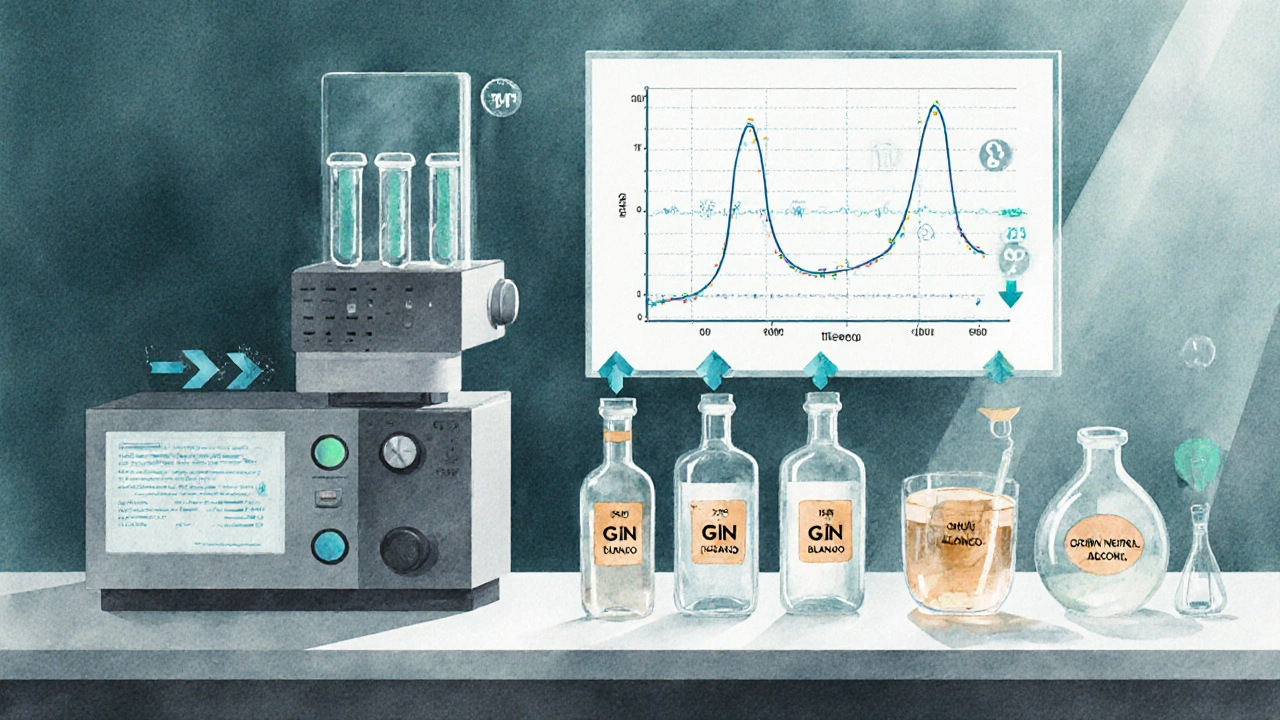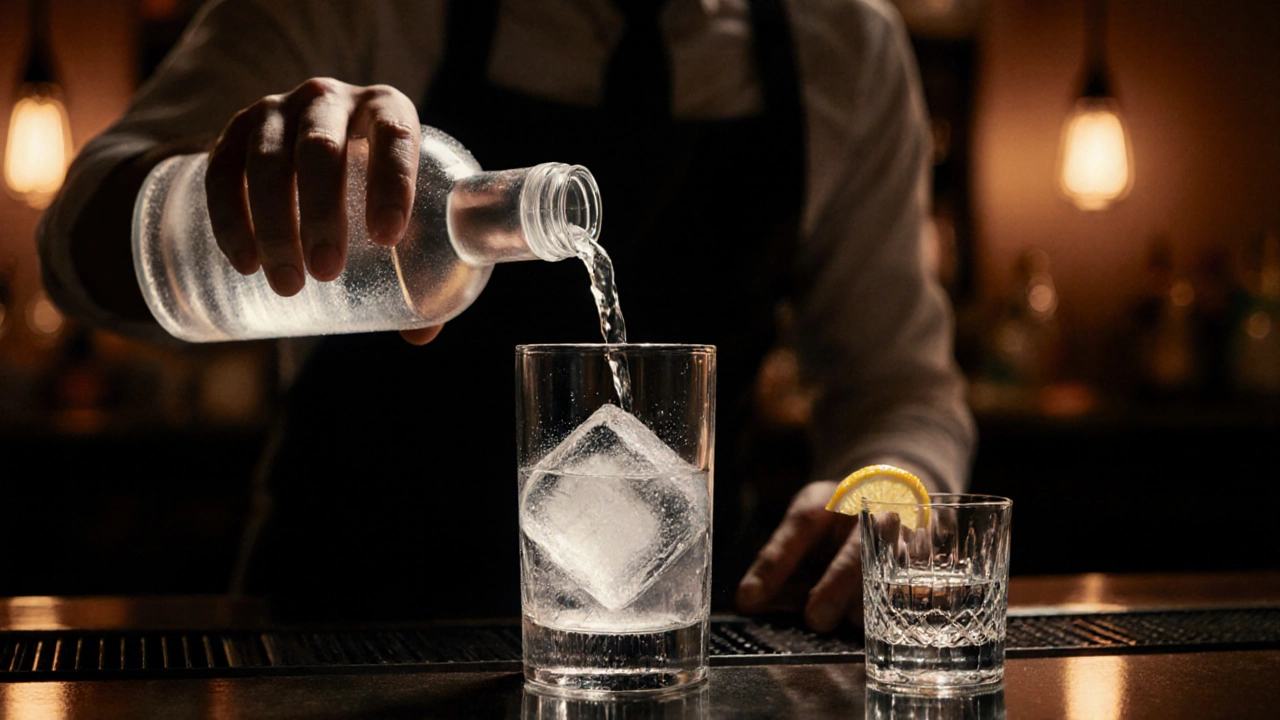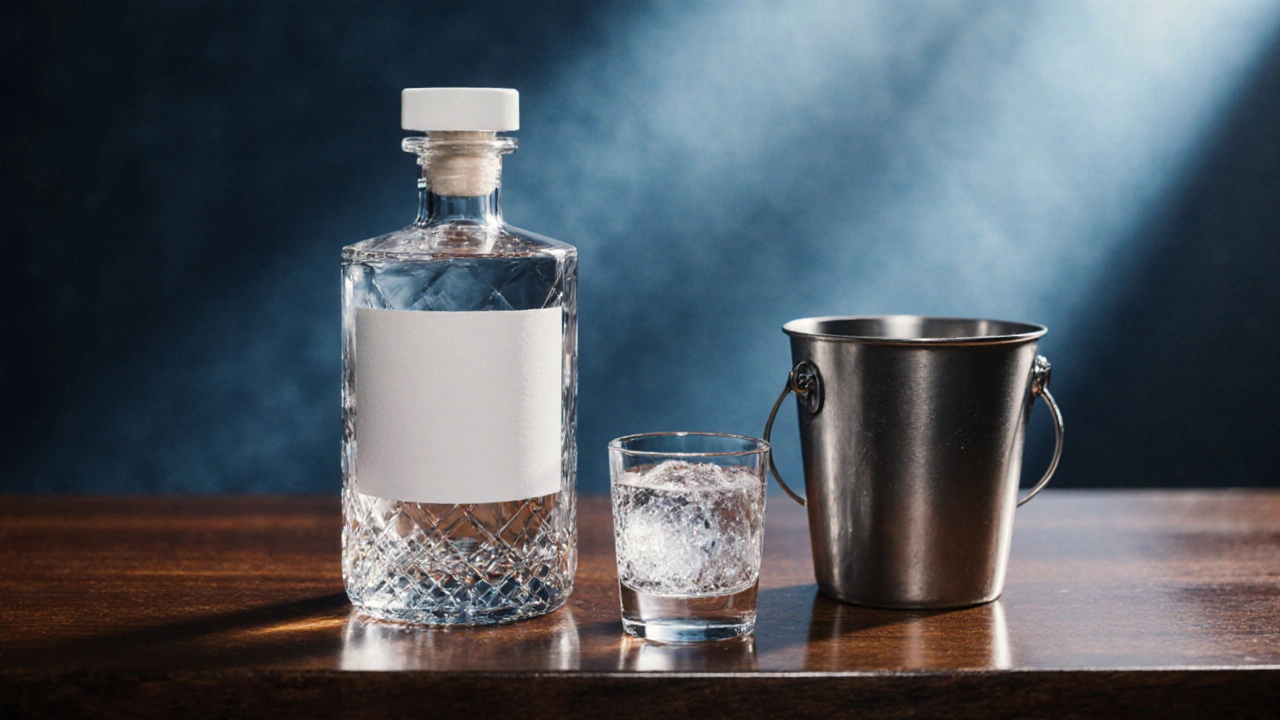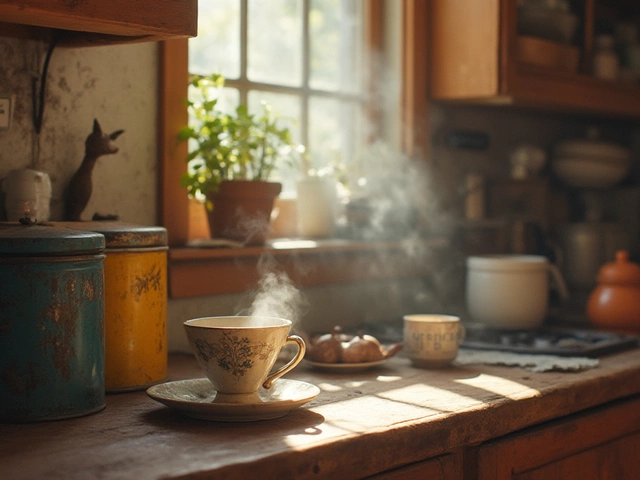Clean Spirit Comparison Tool
Compare Clean Spirits
| Spirit | Base Material | Filtration | ABV | Congeners | Flavor Profile | Cleanliness |
|---|
When you ask yourself “What is the cleanest spirit to drink?”, you’re really hunting for a liquor that lets you feel the alcohol without the baggage of harsh flavors, off‑notes, or unwanted chemicals. In plain terms, a clean spirit is one that’s been stripped down to pure ethanol, with minimal congeners, heavy metals, or colour additives. Think of it as the “water of the bar” - you can sip it straight, mix it in a cocktail, or use it as a neutral base without fighting against strong aromatics.
Clean spirit is a distilled beverage that aims for the lowest possible level of flavour‑active compounds, delivering a neutral taste and a silky mouthfeel. The idea isn’t new - distillers have chased purity for centuries, but modern filtration tech and strict regulation have made today’s clean spirits noticeably smoother.
How Cleanliness Is Measured
There are three concrete ways to judge how "clean" a spirit really is:
- Congener content: These are trace chemicals created during fermentation and aging, such as fusel oils, aldehydes, and esters. Lower congener levels mean fewer headaches and a milder after‑taste.
- Filtration depth: Charcoal, silver, or multi‑stage filtration strips out impurities and colour. The more stages, the clearer the liquid.
- Proof and base material: Pure grain alcohol (often called grain neutral spirit) at 95% ABV, then diluted, yields a very clean palate. Base materials like potatoes or grapes can add subtle flavours that some consider impurities.
Laboratories typically use gas chromatography to count congeners in parts per million (ppm). A spirit with under 10ppm is generally regarded as “clean” for most drinkers.

Top Contenders for the Cleanest Spirit
Below are the most popular candidates that regularly score high on the three metrics above.
Vodka is a neutral grain spirit filtered multiple times to remove colour, flavour and congeners, usually bottled at 40% ABV. Brands that advertise “four‑time charcoal filtration” or “quad‑distilled” often sit at the top of the clean‑spirit ladder.
Gin starts as a neutral spirit but is infused with botanicals; however, many “London Dry” gins use a highly purified base, making the spirit itself very clean before the botanicals are added. If you choose a gin with minimal juniper and low‑cone botanicals, the underlying spirit remains exceptionally neutral.
Tequila Blanco is made from 100% blue agave and bottled soon after distillation, preserving a clean, crisp profile with low congeners compared to aged variants. Premium blancos are often filtered through charcoal to smooth any harsh edges.
White Rum is distilled from sugarcane juice or molasses and usually unaged, giving a clear, clean spirit that benefits from charcoal filtration to reduce fusel oils. Some artisanal rums are distilled at high proof and then diluted, mimicking the vodka process.
Unaged Whiskey (White Whiskey) is whiskey that’s been distilled but not aged in barrels; because it skips the wood interaction, it retains a pure grain character with fewer congeners. Think of it as a hybrid between vodka’s neutrality and whiskey’s grain backbone.
Grain Neutral Alcohol (GNA) is a high‑proof (typically 95% ABV) spirit made from cereal grains, distilled to a purity that leaves virtually no flavour or congeners. It’s the raw material behind many vodkas and is sometimes sold directly for mixing.
Side‑by‑Side Comparison
| Spirit | Base Material | Typical Filtration | ABV (bottled) | Congener ppm* | Flavor Profile |
|---|---|---|---|---|---|
| Vodka | Mixed grains (wheat, rye, corn) | 4× charcoal/diamond | 40% | 2-8 | Neutral, clean |
| London Dry Gin | Grain neutral spirit | 3× charcoal + botanical maceration | 40-47% | 3-10 | Juniper‑forward, dry |
| Tequila Blanco | Blue agave | Charcoal (optional) | 38-40% | 5-12 | Bright, vegetal |
| White Rum | Sugarcane juice/molasses | 2× charcoal | 40% | 4-11 | Light, slightly sweet |
| Unaged Whiskey | Barley/maize mash | 1× charcoal | 45% | 7-15 | Grain‑rich, crisp |
| GNA (95% proof) | Cereal grains | Multi‑stage (often 5+) | 95% | 1-5 | Virtually neutral |
*Values are based on typical lab analyses from reputable distilleries (e.g., European Spirits Authority reports 2023‑2024).
Choosing the Right One for Your Palate
Even within the clean‑spirit family, personal taste matters. Here’s a quick decision guide:
- If you want the purest, almost flavour‑less base for intricate cocktails, go for Grain Neutral Alcohol or a high‑end vodka with at least four filtration stages.
- For a neutral spirit that still carries a hint of character (ideal for martinis or a gin‑forward riff), choose a London Dry Gin with a clean‑base gin.
- When you prefer a subtle vegetal edge that pairs nicely with citrus, a premium Tequila Blanco filtered through charcoal does the trick.
- If you love a touch of sweetness without the weight of colour, a well‑filtered White Rum works beautifully in daiquiris or simple highballs.
- For a grain‑forward profile that still feels light, an Unaged Whiskey offers a bridge between vodka’s neutrality and whisky’s depth.
Remember, the cleanest spirit isn’t always the cheapest. Distillation, filtration, and quality control add cost, but they also add consistency - something you’ll notice when the spirit sits on the palate for a few seconds before the mix.

Practical Tips for Enjoying Clean Spirits
Even the cleanest spirit can taste harsh if you serve it wrong. Follow these simple steps:
- Store bottles upright and away from direct sunlight; UV light can degrade ethanol over time.
- Serve chilled (around 6‑8°C) for vodka and gin; a bit warmer (10‑12°C) works for tequila and rum to let subtle aromas shine.
- Use crystal‑clear glassware - a highball or a shot glass with a thin rim reduces the perception of any residual harshness.
- If you’re mixing, start with a 1:2 spirit‑to‑mixer ratio for a clean base; adjust to taste.
- Consider a single ice cube made from filtered water; large cubes melt slower, keeping the drink from diluting too quickly.
Finally, trust your nose. A clean spirit should give you a faint grain or mineral scent, not the sharp burn of cheap fusel oils. If it smells harsh, it’s probably not the cleanest option for you.
Key Takeaways
- Cleanliness hinges on low congener levels, deep filtration, and a neutral base.
- Vodka, grain neutral alcohol, and multi‑filtered gins consistently rank highest.
- Tequila blanco, white rum, and unaged whiskey provide clean alternatives with subtle flavour twists.
- Serving temperature, glassware, and water quality can make a big difference.
- Use the decision guide to match a clean spirit to your favorite cocktail style.
Frequently Asked Questions
What does “low congener” actually mean?
Congeners are by‑products of fermentation and aging, such as methanol, acetone, and various esters. They contribute to flavor but also to hangovers. A low‑congener spirit has been distilled multiple times and filtered to keep these compounds under 10ppm, resulting in a smoother drink and fewer next‑day symptoms.
Is vodka always the cleanest spirit?
Vodka is the most common clean spirit, but not every vodka is created equal. Some brands use fewer filtration steps or lower‑grade grains, which raises congener levels. Premium vodkas that tout “quad‑distilled” or “charcoal‑filtered” processes usually beat the average. However, a well‑filtered gin or a high‑proof grain neutral alcohol can be just as clean, especially if you prefer a slight botanical or grain note.
Can I use a clean spirit for cooking?
Absolutely. Because clean spirits lack strong flavours, they won’t dominate a sauce or reduction. Use them to deglaze pans, make simple syrups, or create clean‑tasting flambés. Just remember that alcohol evaporates quickly, so the final dish will retain only the subtle aroma the spirit provides.
How can I test a spirit at home for purity?
A basic home test is the “water test”: pour a shot of the spirit into a glass of ice‑cold filtered water. If the spirit mixes instantly with no cloudiness, it’s likely well‑filtered. For a more scientific approach, you’d need gas chromatography equipment, which most home bars don’t have, so rely on brand reputation and lab‑tested specifications.
Do clean spirits have fewer calories?
Calories come mainly from alcohol (7kcal per gram). Since clean spirits usually sit around 40% ABV, their calorie count is similar to any other spirit at the same proof. The difference is not in calories but in how the body processes congeners, which can affect hangover severity.


